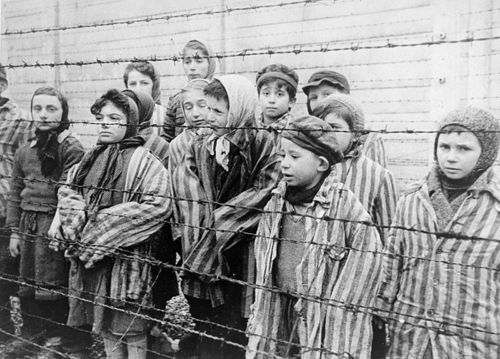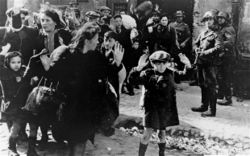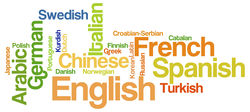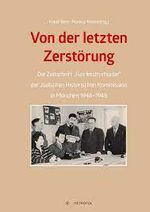Difference between revisions of "Category:Holocaust Children Studies--1940s"
| Line 74: | Line 74: | ||
[[File:1946 Kaplan|100px]] | [[File:1946 Kaplan.jpg|100px]] | ||
[[File:2020 Beer - Roth.jpg|thumb|150px|"Von der letzten Zerstörung. Die Zeitschrift ′Fun letstn churbn′ der Jüdischen Historischen Kommission in München 1946–1948." Ed. by Frank Beer and Markus Roth. Berlin: Metropol Verlag 2020.]] | [[File:2020 Beer - Roth.jpg|thumb|150px|"Von der letzten Zerstörung. Die Zeitschrift ′Fun letstn churbn′ der Jüdischen Historischen Kommission in München 1946–1948." Ed. by Frank Beer and Markus Roth. Berlin: Metropol Verlag 2020.]] | ||
Revision as of 08:44, 22 February 2022
|
|
Holocaust Children Studies : 2020s -- 2010s -- 2000s -- 1990s -- 1980s -- 1970s -- 1960s -- 1950s -- 1940s -- 1930s -- Home General : 2020s -- 2010s -- 2000s -- 1990s -- 1980s -- 1970s -- 1960s -- 1950s -- 1940s -- 1930s -- 1920s -- 1910s -- 1900s -- 1850s -- 1800s -- 1700s -- 1600s -- 1500s -- 1450s -- Medieval -- Home
|
Overview
"In the immediate postwar period, thousands of testimonies were taken from Jewish children who survived the Holocaust. These testimonies, many of them in the children’s own handwriting, enable us better to understand the Holocaust experience of Jewish children and provide a unique insight into their world ... The initiators of the collections believed that the testimonies served therapeutic purposes for the children involved, and also broader educational and moral purposes—for example, to focus the world’s attention on the Jewish tragedy ... Many collections of children’s testimonies were initiated in the immediate postwar years. Benjamin Tenenbaum (1914–1999), a Polish-born Jewish prewar emigrant to Palestine, traveled to Poland in 1946. With the aid of a few friends, he collected 1,000 “autobiographies” written by surviving Jewish children ... Dr. Helena Wrobel-Kagan, a survivor of Bergen-Belsen, started a school at that camp in late 1945. She asked the children, themselves survivors, to write essays entitled “My Way from Home to the Camp” ... Similarly, the Jewish Historical Commissions in Poland and in the American Zone in Germany focused on children in their effort to collect survivor testimonies. Other Jewish organizations, such as the National Relief Committee for Deportees in Hungary and the American Jewish Joint Distribution Committee (JDC) in its children’s homes in France, collected children’s testimonies more sporadically ... Many of the testimonies were published soon after the war. The regional Jewish Historical Commission in Krakow published excerpts from children’s testimonies and one full testimony, in book form, in 1945. From 1946 onward, the Central Jewish Historical Commission in Munich published a child survivor’s testimony in each issue of its journal, Fun letstn khurbn. In 1947, three anthologies of children’s testimonies were published—one in Tel Aviv, one in Warsaw, and one in Buenos Aires."--Boaz Cohen, Bar-Ilan University.
Bibliography
- Boaz Cohen. Representing Children's Holocaust
- Boaz Cohen. "The Children’s Voice: Postwar Collection of Testimonies from Child Survivors of the Holocaust." Holocaust and Genocide Studies 21. 1 (Spring 2007): 73–95.
Title
Fun letstn khurbn [From the Last Extermination]: Journal for the history of the Jewish people during the Nazi regime. Munich [Germany]: 1946-1948.
Abstract
"In December 1945 the "Central Committee for the Liberated Jews in Germany" (Tsentral komitet fun di bafrayte Yidn in der Amerikaner Zone) set up the Munich-based "Central Historical Commission" (Tsentral historishe komisye). Israel Kaplan, a teacher from Kovno, and Moshe Figenboim, an accountant, were appointed to head the Commission. Through their leadership (and much prodding), the Commission’s pool of employees and paid and unpaid volunteers collected 2,500 testimonies as well as 8,000 questionnaires filled out mainly in Yiddish, but also in Hebrew, Polish, Hungarian, and German ... With Hebrew-alphabet print sets and a printing machine, the Commission began publishing in 1946 a Yiddish-language journal entitled Fun letstn khurbn (From the Last Destruction). The journal’s primary purpose was to support documentation efforts by encouraging DPs to give testimony. ... For Israel Kaplan, the editor-in-chief of Fun letstn khurbn, children were a distinct group whose voice the world needed to hear. Under Kaplan’s guidance, the Historical Commission started a collection campaign in late 1946. Like the Historical Commission in Poland, the Munich commission developed special questionnaires and opened an essay contest for children writing about their Holocaust experiences. Starting with the second issue, Kaplan published a child’s testimony in each issue of Fun letstn khurbn ... The Commission was disbanded in 1948, and the materials it had gathered were transferred eventually to Yad Vashem."--Boaz Coen
Media in category "Holocaust Children Studies--1940s"
The following 18 files are in this category, out of 18 total.
- 1942 Pichel (film).jpg 235 × 355; 50 KB
- 1943 Krása opera.jpg 440 × 627; 164 KB
- 1944 Gerron (doc).jpg 190 × 281; 8 KB
- 1945 Berg.jpg 334 × 499; 41 KB
- 1945 Borwicz - Rost - Wulf.jpg 187 × 270; 10 KB
- 1946 Asscher.jpg 181 × 279; 9 KB
- 1946 Berg it.jpg 260 × 346; 17 KB
- 1946 Kaplan.jpg 187 × 269; 7 KB
- 1947 Frank.jpg 250 × 383; 49 KB
- 1947 Grüss.jpg 188 × 268; 13 KB
- 1947 Hochberg - Grüss.jpg 128 × 184; 3 KB
- 1947 OSE.jpg 1,200 × 1,635; 355 KB
- 1947 Tenenbaum.jpg 650 × 907; 119 KB
- 1948 Ford (film).jpg 440 × 617; 67 KB
- 1948 Gross film.jpg 209 × 288; 23 KB
- 1948 Heyman.jpg 318 × 462; 50 KB
- 1948 Küchler-Silberman.jpg 503 × 678; 209 KB
- 1948 Zinnemann film.jpg 245 × 445; 28 KB






















